Implementing the behavior management cycle can feel like a big task, but it’s really about five key steps that make it manageable:
These steps aren’t just a checklist; they create a structured approach that helps caregivers and educators navigate behaviors more effectively.
Imagine how much easier it can be when everyone knows what’s expected! This structured method fosters a supportive environment, promoting the growth and well-being of our young individuals. By embracing these steps, we can all contribute to a nurturing space where children thrive. Let’s explore this together!
Understanding the intricacies of the behavior management cycle can truly transform how caregivers and educators tackle the challenges of guiding young individuals. 🌟 By implementing a structured framework that emphasizes clear expectations, monitoring, and feedback, this cycle supports behavioral growth and fosters emotional well-being. But here’s the big question: how can caregivers effectively navigate the complexities of each step to ensure lasting positive outcomes for the children in their care? Let’s explore this together!
The behavior management cycle is a helpful framework that allows caregivers and educators to effectively manage the actions of young individuals. Let’s break it down into some key steps:
Understanding and applying the behavior management cycle helps caregivers create a responsive and organized approach to managing actions, ultimately supporting the young person's growth and well-being. So, let’s explore this together and see how we can make a positive impact!
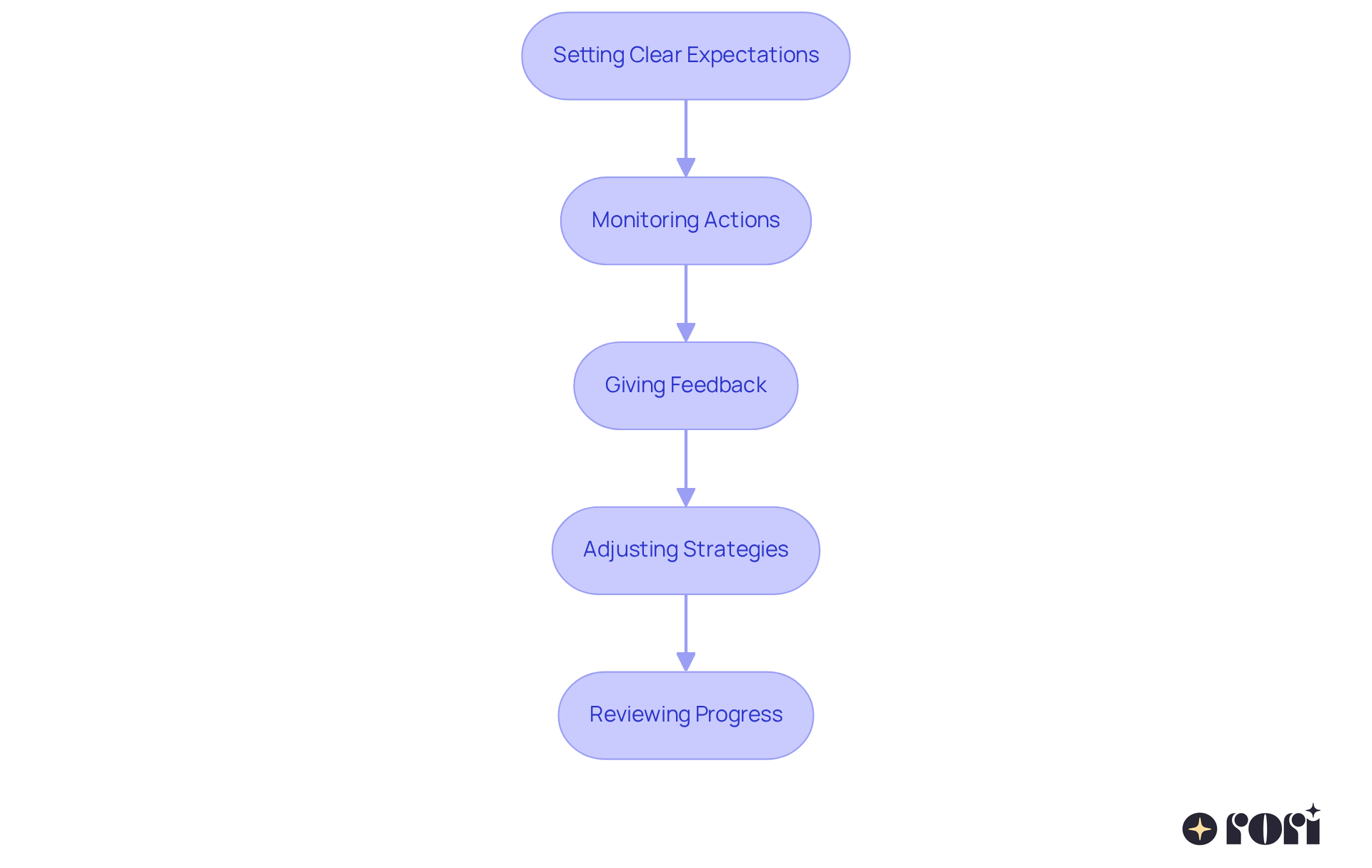
To effectively assess your child's behavior and needs, let’s follow these friendly steps together:
Gather Information: Start by collecting insights from various sources—parents, teachers, and therapists. Using tools like conduct checklists and rating scales, such as the Child Behavior Checklist (CBCL) and Strengths and Difficulties Questionnaire (SDQ), can provide you with measurable insights into your child's actions. These tools are reliable and have strong psychometric properties, making them great for assessing emotional and behavioral issues.
Observe Behavior: Spend some time watching your child in different environments—at home, school, and during social activities. This helps you recognize specific behaviors that may be concerning or beneficial. Observing them in real-time can reveal patterns that structured assessments might miss.
Identify Triggers: Pay attention to what situations or events seem to provoke certain responses in your child, whether positive or negative. Understanding these triggers is key! It can guide you in creating effective interventions tailored to your child’s unique circumstances. Your active involvement in this process can really enhance the effectiveness of any interventions.
Evaluate Skills: Assess your child’s social skills, communication abilities, and emotional regulation. Tools like the Social Skills Improvement System Rating Scales (SSIS-RS) can help evaluate these areas, pinpointing where they might need extra support. Identifying skill deficits early on is essential for effective intervention. By regularly revising treatment plans based on progress and using resources like the care engine, you can ensure that interventions align with your child's developing needs.
Seek Experts: If needed, don’t hesitate to reach out to behavioral specialists or psychologists. They can provide deeper insights into your child’s actions and needs. Engaging with experts can offer valuable suggestions for tailored interventions, ensuring a comprehensive approach to your child’s development.
By following these strategies, you can create a more effective and personalized behavior management cycle that truly meets your child's specific needs. Remember, we’re here to help you every step of the way!
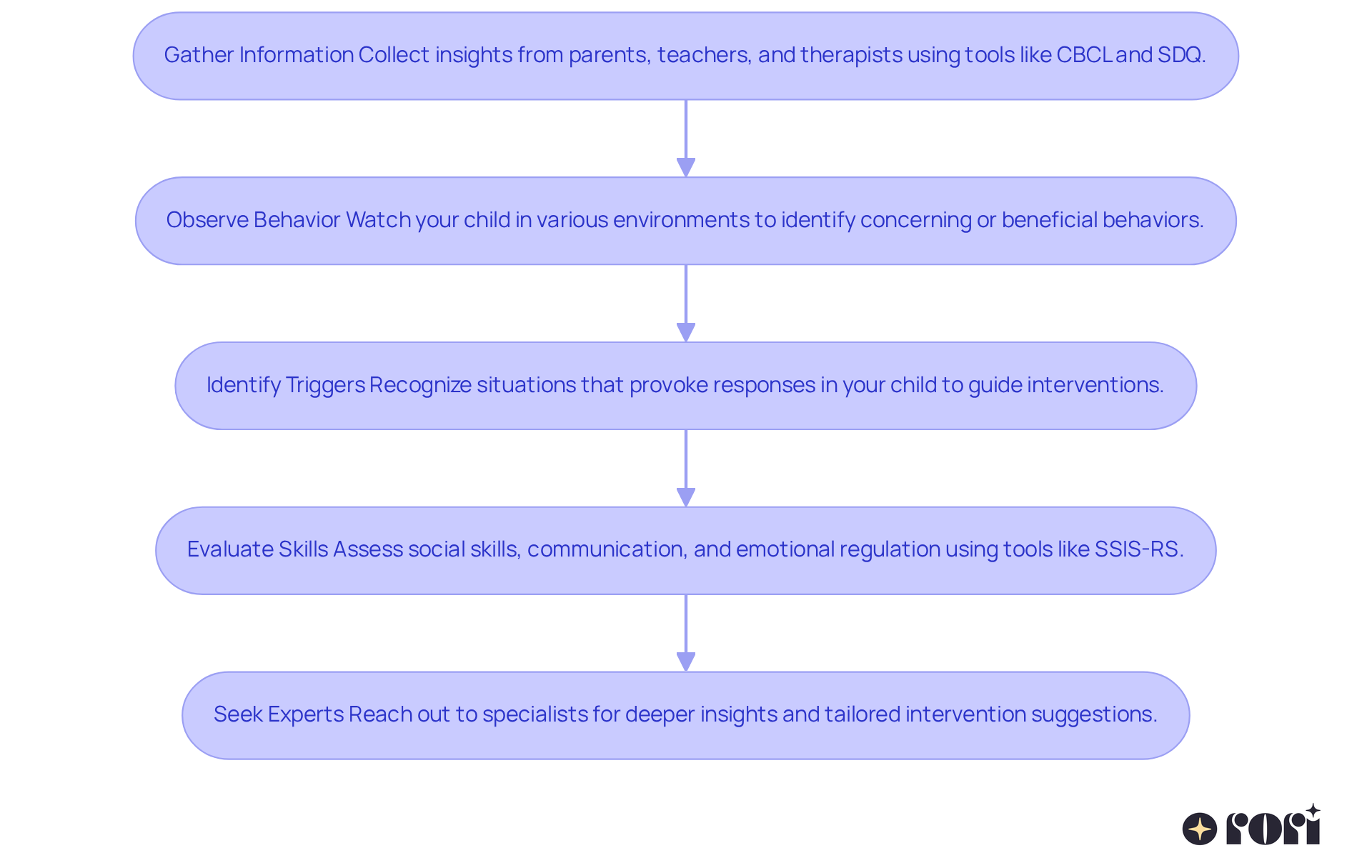
Establishing a structured daily routine for your child can feel like a big task, but it’s all about taking it step by step! Here are some essential steps to help you along the way:
Identify Key Activities: Start by jotting down the key daily activities, like waking up, meals, school, playtime, and bedtime. This gives you a clear picture of what needs to happen each day, ensuring nothing important slips through the cracks.
Set Consistent Times: Next, assign specific times for each activity. This helps create a predictable schedule, which is super important for kids! When they know what to expect, it can ease anxiety and encourage cooperation. Research shows that having a regular routine supports kids' mental well-being by providing stability and security. Plus, with some caregiver training, you can implement these practices effectively, helping your child reach their behavioral goals.
Use Visual Aids: Consider developing a visual schedule using pictures or charts to represent each activity. Resources like the PBS Kids printable visual schedule can be a game-changer for helping kids stick to their routines. Bright visuals and fun cut-out tasks can really grab their attention and encourage them to participate. This method aligns beautifully with ABA principles, empowering you to reinforce those positive behaviors.
Incorporate Flexibility: While consistency is key, don’t forget to allow for some flexibility in the schedule. Chatting with your child about potential changes can prepare them for unexpected situations, helping them feel secure even when things shift. Your understanding of ABA strategies can be a great asset in navigating these changes smoothly.
Evaluate and Modify: Regularly check in with your child about the schedule, welcoming their input and making adjustments as needed. This collaborative approach not only empowers them but also fosters a sense of ownership over their daily activities. Engaging with your child in this way can build their confidence and mastery over their routine.
By establishing an organized daily schedule, you’re helping your child feel safe and supporting their behavior management cycle. Consistent routines provide stability and support emotional well-being, allowing kids to navigate their day with confidence. Remember, your role as a caring caregiver is crucial in this journey, as it directly influences your child’s progress within the behavior management cycle. Let’s explore this together and see how we can make daily routines a positive experience for everyone!
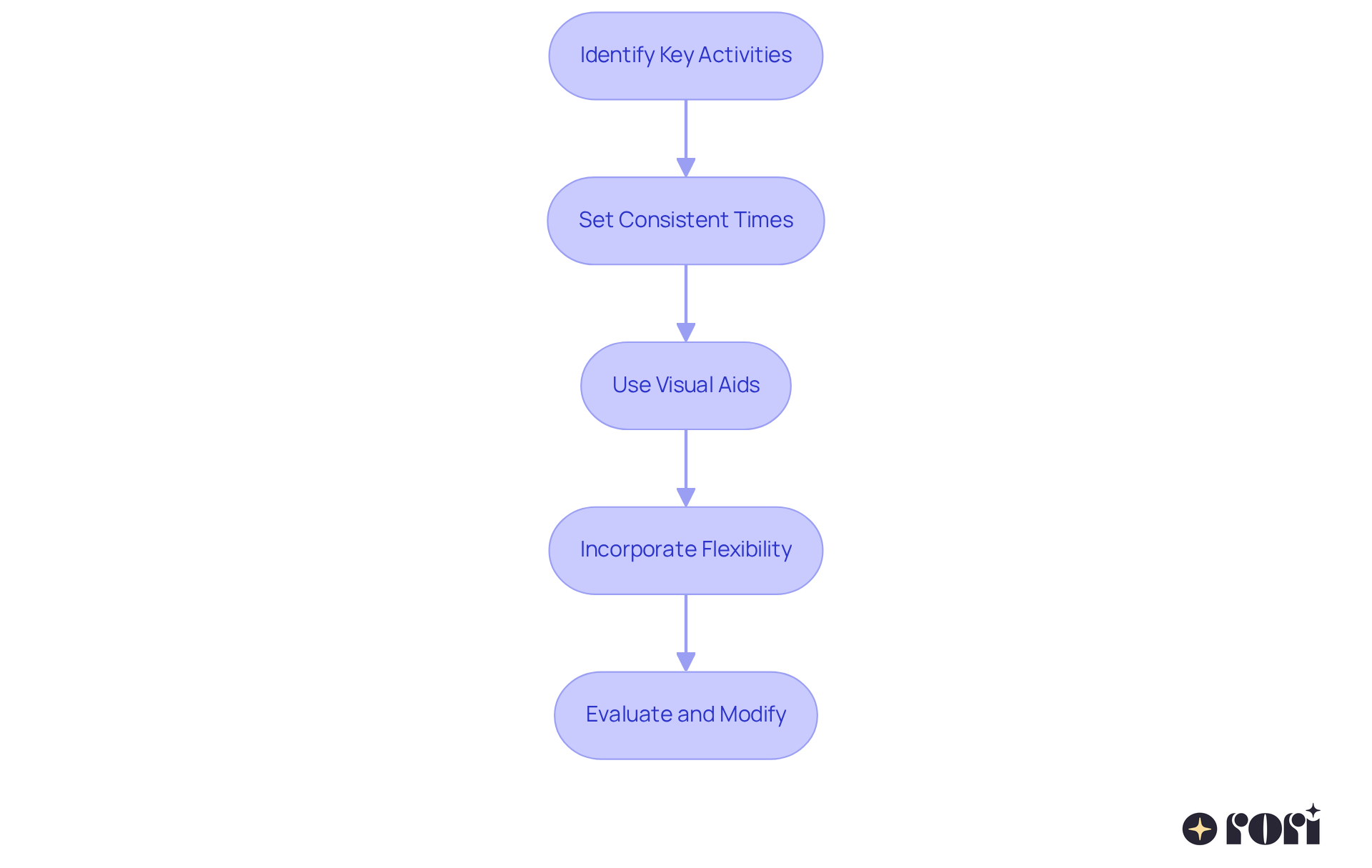
To effectively implement the Behavior Management Cycle in your daily interactions, let’s consider some helpful steps:
Communicate Expectations: Start by clearly articulating your expectations before any activity or situation. Use simple language that your little one can easily grasp. For instance, instead of saying something vague, specify what you want them to do, like, 'Please put your toys away after playing.' Establishing achievable expectations, such as asking for just 10 minutes of quiet time instead of an entire day, can really help your child understand what’s needed.
Monitor Conduct: Keep a close eye on your child's actions during activities. Using a tracking tool to document notable behaviors can help you recognize patterns and triggers. This proactive approach allows you to address issues before they escalate. Intervention plans (BIPs) created after a functional assessment (FBA) can provide a structured method to understand and tackle behavioral challenges. Plus, continuously assessing your child’s progress is essential; our care system revises intervention and skill development plans based on what’s achieved, ensuring strategies stay effective and adaptable. Setting measurable goals during this process can help track progress and adjust strategies accordingly.
Provide Immediate Feedback: Deliver praise or corrective input right after the action occurs. Research shows that prompt feedback greatly boosts youth improvement, reinforcing positive actions and effectively addressing unwanted ones. For example, saying 'Great job calming down!' right after your child demonstrates self-discipline can motivate them to repeat that action. Citing statistics on the effectiveness of immediate feedback can further strengthen this point.
Adjust Strategies as Needed: Be flexible and willing to modify your approach if certain strategies aren’t working as you’d hoped. This might mean changing how you communicate expectations or tweaking the rewards system. For instance, if your child responds better to visual cues, consider using charts or images to illustrate what you expect. Also, ignoring minor misbehavior can prevent reinforcing negative actions, providing a more comprehensive approach to behavior management. Remember, each behavioral strategy should be customized to fit your child’s unique needs, strengths, and challenges.
Engage in Reflection: After each interaction, take a moment to reflect on what went well and what could be improved. Dr. Jennifer Moore highlights the importance of parents reflecting on their interactions to avoid coercive cycles. This reflective practice will help you refine your approach over time, ensuring your strategies remain effective and responsive to your child’s needs.
By consistently utilizing the behavior management cycle in your daily interactions, you can foster a supportive atmosphere that encourages positive actions and enhances your child's development. Let’s explore this together!
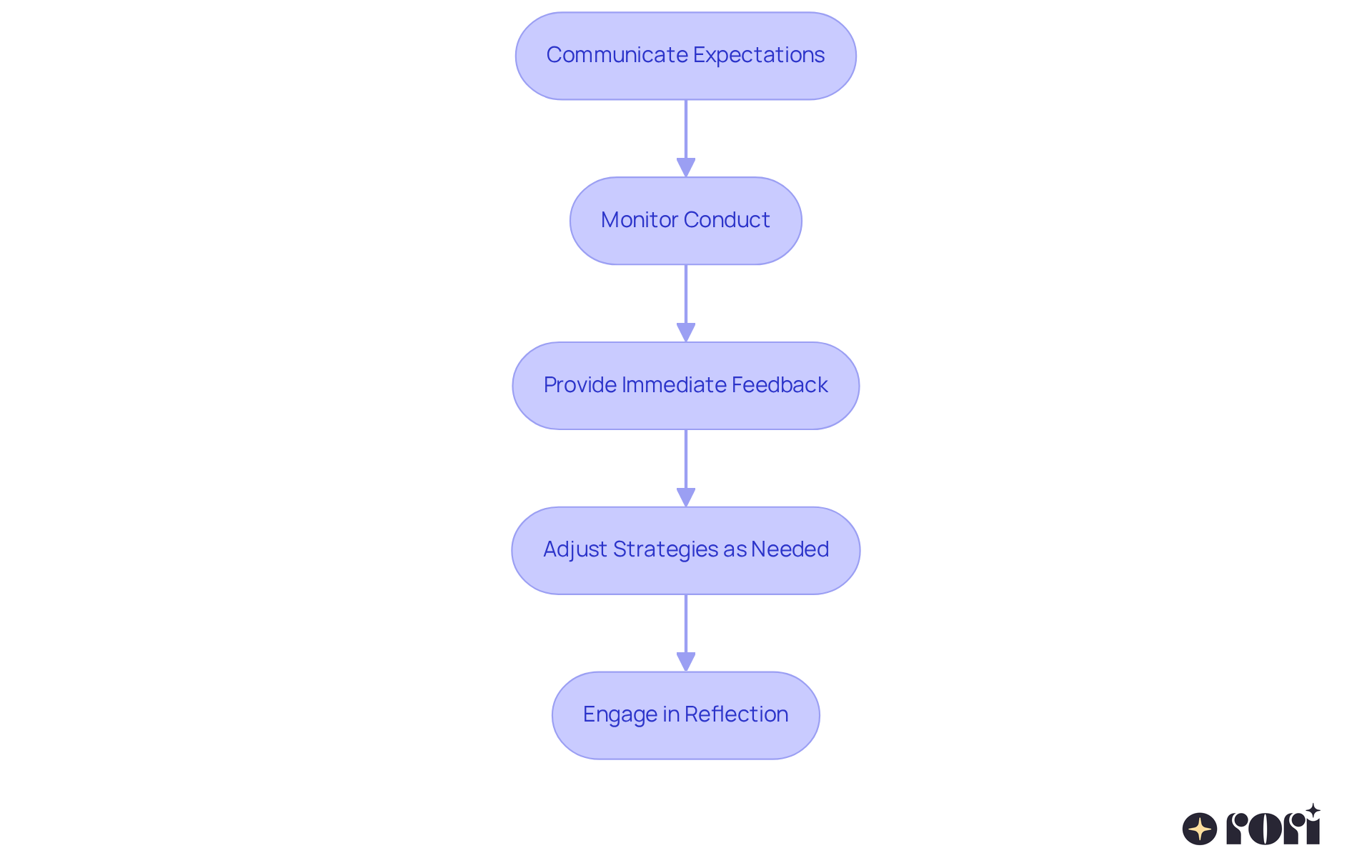
To effectively monitor progress and adjust strategies, let’s follow these steps together:
Set Clear Goals: It’s important to establish specific, measurable objectives for your child’s behavior. For example, aim for them to start and sustain a conversation with a peer for three minutes. This clarity not only provides a benchmark for assessing progress but also boosts their motivation.
Collect Information Regularly: Use tracking tools to consistently gather data on your child’s actions. This could include frequency counts, duration, or intensity of behaviors, giving you a thorough perspective on their progress.
Review Data: Regularly take a moment to examine the information you’ve gathered. Look for trends and patterns in your child’s behavior. Celebrate the improvements and identify areas that might need a little extra focus, ensuring that the goals you set remain relevant and achievable.
Adjust Strategies: Be ready to modify your behavior management strategies based on what the data tells you. This might mean changing up reinforcement strategies, tweaking routines, or seeking additional support to better meet your child’s evolving needs.
Involve Your Child: Engage your child in the process by discussing their progress and including them in setting new goals. This collaboration not only empowers them but also enhances their motivation to succeed.
By continuously monitoring progress and adjusting strategies, you can ensure that your behavior management cycle remains effective and responsive to your child’s unique needs. Remember, we’re here to help you every step of the way!
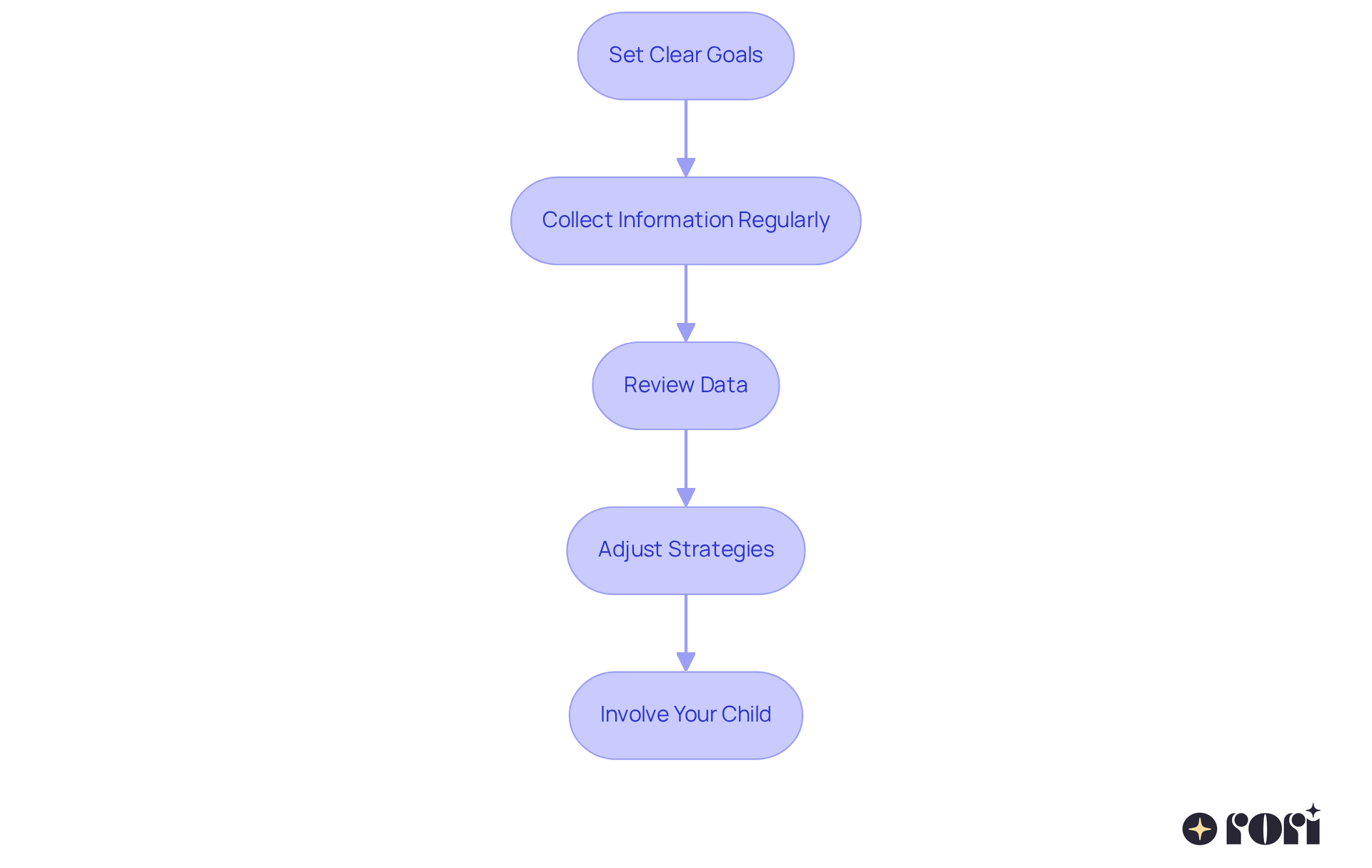
Implementing the behavior management cycle is a fantastic way to enhance the developmental journey of young individuals. By focusing on clear expectations, consistent monitoring, and responsive feedback, caregivers and educators can create a nurturing environment that truly promotes positive behavior and personal growth.
The article highlights essential steps for effectively utilizing this cycle. It includes:
Each step is crafted to foster understanding and adaptability, ensuring that strategies are tailored to the individual’s evolving requirements. Let’s not forget the importance of collaboration with the child throughout this process; it empowers them and reinforces their role in their own development.
Ultimately, the behavior management cycle serves as a dynamic framework. It not only supports the management of behavior but also nurtures emotional well-being and social skills. Embracing these strategies can lead to meaningful improvements in a child’s behavior and overall quality of life. By committing to this structured approach, caregivers can make a lasting impact on their child's journey, paving the way for a brighter and more confident future. So, let’s explore this together and make a difference in our children’s lives!
What is the behavior management cycle?
The behavior management cycle is a framework that helps caregivers and educators manage the actions of young individuals through key steps including setting clear expectations, monitoring actions, giving feedback, adjusting strategies, and reviewing progress.
How can caregivers set clear expectations for young individuals?
Caregivers can set clear expectations by discussing rules and routines in a way that is easy for the young person to understand, ensuring they know what actions are expected of them.
Why is monitoring actions important in the behavior management cycle?
Monitoring actions helps caregivers spot patterns and triggers in behavior, providing valuable information for guiding future interventions and understanding the individual's unique needs.
What role does feedback play in the behavior management cycle?
Providing timely and constructive feedback is crucial for encouraging preferred actions and creating a nurturing environment, as it reinforces positive behavior.
How should caregivers adjust their strategies during the behavior management cycle?
Caregivers should be flexible and ready to tweak their strategies based on feedback and observations to better align with the young individual's evolving needs.
Why is it important to review progress in behavior management?
Regularly checking in on the individual's development ensures that the strategies in place are effective and allows for necessary adjustments, promoting continuous improvement.
What are some steps to assess a child's behavior and needs?
Steps include gathering information from various sources, observing behavior in different environments, identifying triggers, evaluating skills, and seeking expert advice if necessary.
How can caregivers gather information about their child's behavior?
Caregivers can collect insights from parents, teachers, and therapists, and use tools like conduct checklists and rating scales, such as the Child Behavior Checklist (CBCL) and Strengths and Difficulties Questionnaire (SDQ).
What should caregivers observe when assessing their child's behavior?
Caregivers should observe their child in various settings—home, school, and social activities—to recognize specific concerning or beneficial behaviors and identify patterns.
How can caregivers identify triggers for their child's behavior?
By paying attention to situations or events that provoke certain responses, caregivers can understand triggers that guide the creation of effective, tailored interventions.
What tools can help evaluate a child's social skills and emotional regulation?
Tools like the Social Skills Improvement System Rating Scales (SSIS-RS) can assist in assessing social skills, communication abilities, and emotional regulation.
When should caregivers seek help from experts?
Caregivers should reach out to behavioral specialists or psychologists if they need deeper insights into their child's actions and needs or tailored intervention suggestions.